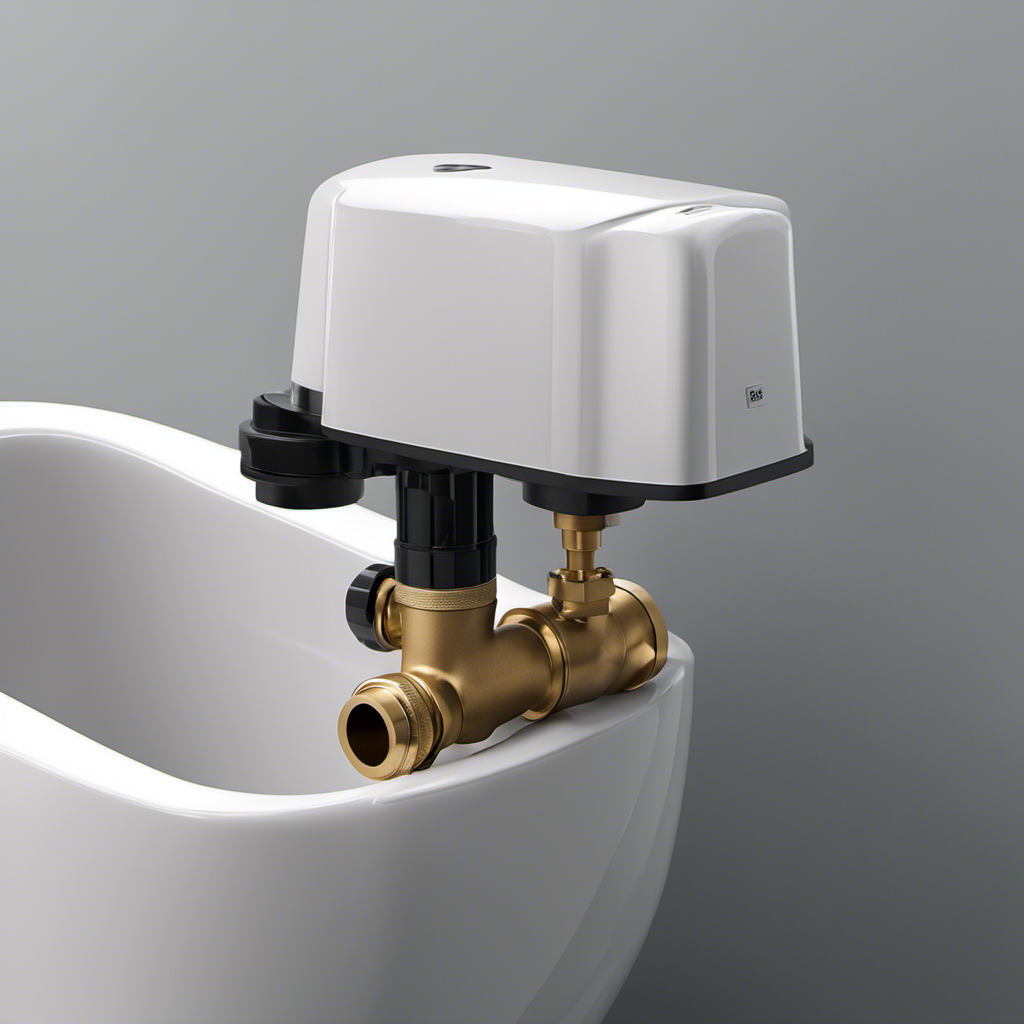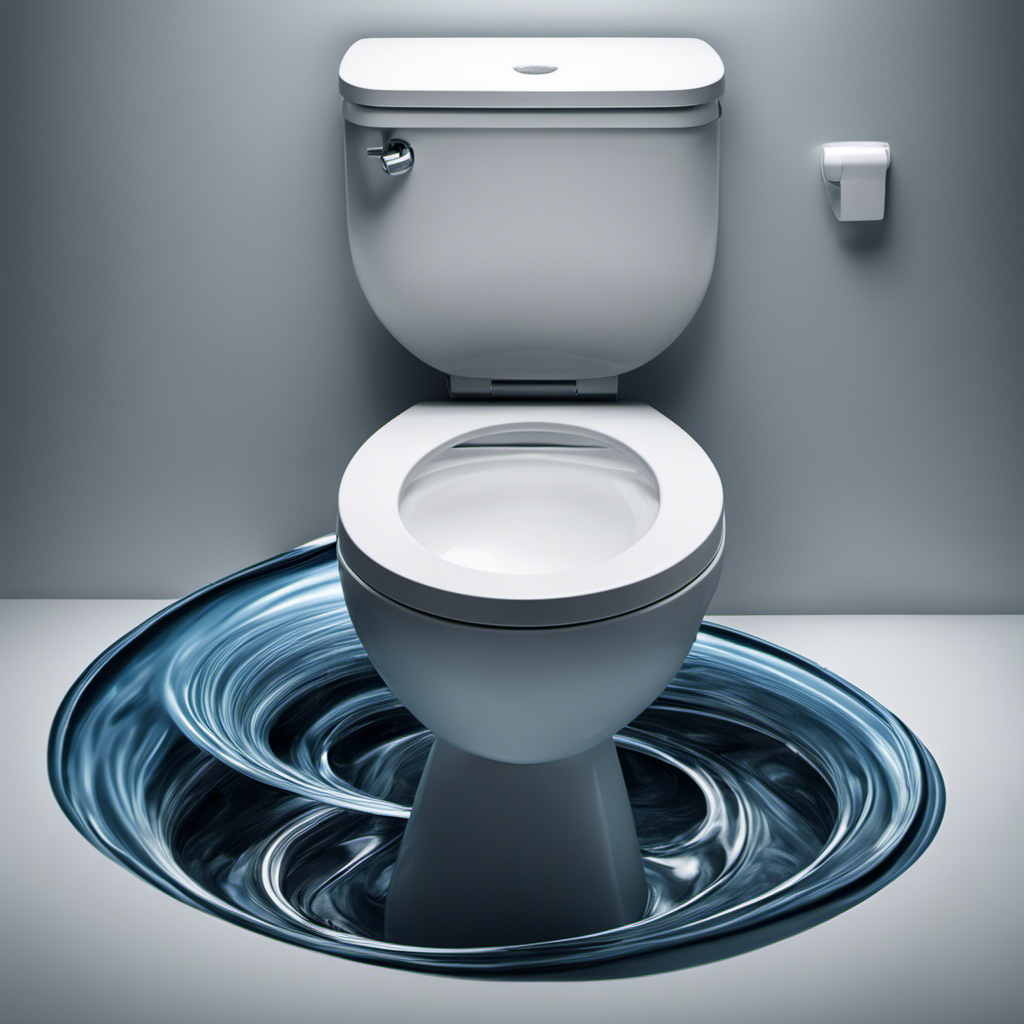So, you’re tired of dealing with that pesky toilet bowl that always seems to have too much or too little water?
Well, fear not, my friend, for I have the solution for you.
In this article, I will guide you step-by-step on how to adjust the water level in a toilet bowl.
We’ll explore the importance of water level, locate the adjustment valve, and even troubleshoot common issues.
So grab your tools and get ready to become the master of your toilet’s water level!
Key Takeaways
- Proper water level is crucial for efficient toilet functioning and water conservation.
- Adjusting the water level helps prevent unnecessary water usage and ensures optimal flushing performance.
- The water level adjustment valve, usually located on the side or bottom of the tank, can be used to adjust the water level.
- Troubleshooting float problems and water level adjustment issues is important for maintaining the proper water level in the toilet bowl.
Understand the Importance of Water Level in a Toilet Bowl
You need to understand the importance of maintaining the correct water level in your toilet bowl. This is not only crucial for the functioning of your toilet, but it also plays a significant role in water conservation.
A toilet that has too much water can lead to unnecessary wastage, while a toilet with too little water may not flush effectively. To check for water leaks, start by removing the toilet tank lid and placing a few drops of food coloring into the tank. Wait for about 10-15 minutes without flushing the toilet. If you notice any colored water in the bowl, it indicates a leak.
Now that you understand the importance of water level in a toilet bowl and how to check for leaks, let’s move on to the next step: locating the water level adjustment valve.
Locate the Water Level Adjustment Valve
To find it, simply locate the valve that controls the water level in your toilet. This valve is usually located on the side or bottom of the toilet tank.
Understanding water pressure is essential in fixing water level issues. If the water level in your toilet bowl is too high or too low, it may indicate a problem with the water level adjustment valve.
First, turn off the water supply to the toilet by shutting off the valve located behind the toilet. Next, flush the toilet to drain the water from the tank.
Now, locate the water level adjustment valve and use a screwdriver to adjust the float or the screw on the valve to raise or lower the water level.
Assess the Current Water Level in the Toilet Bowl
When it comes to maintaining a properly functioning toilet, the water level is a crucial factor to consider. Understanding the proper water level in your toilet bowl is essential for optimal flushing performance and preventing any potential issues.
In this discussion, we will explore how to assess the current water level in your toilet bowl and provide step-by-step instructions on how to adjust it to the appropriate height.
Proper Water Level
The water level in the toilet bowl should be at the specified mark for proper functioning. To ensure this, you need to adjust the water flow and use the water level indicators as a guide.
First, locate the water level adjustment screw on the fill valve, usually found on the left side of the valve. Turn it clockwise to decrease the water level or counterclockwise to increase it. Keep adjusting and checking the water level until it reaches the desired mark.
Once the water level is adjusted, flush the toilet and observe if it refills to the correct level. If not, continue adjusting until it does. Proper water level is crucial for efficient flushing and preventing overflow.
With the water level set, we can now move on to adjusting the water height in the subsequent section.
Adjusting Water Height
Now that you’ve set the proper water level, let’s move on to adjusting the height of the water in the tank.
This step is crucial in troubleshooting leaks and preventing water waste. To adjust the water height, locate the adjustment valve on the fill valve assembly.
Turn the valve clockwise to decrease the water level or counterclockwise to increase it. Make small adjustments, testing the flush after each one until you achieve the desired water level.
Be careful not to set it too high, as it can lead to continuous running and potential overflow. Remember, the goal is to have the water level just below the overflow tube.
Once you’ve adjusted the water level using the adjustment valve, we can move on to the next step.
Adjust the Water Level Using the Adjustment Valve
To adjust the water level in a toilet bowl, you can use the adjustment valve. This valve is an essential component of the toilet’s water inlet system and allows you to control the amount of water in the bowl.
If you are experiencing a low water level in your toilet bowl, here are the steps to troubleshoot and adjust it using the adjustment valve:
- Locate the adjustment valve, which is usually located on the side or bottom of the toilet’s fill valve.
- Turn the adjustment valve clockwise to increase the water level or counterclockwise to decrease it.
- Flush the toilet to test the water level. Continue adjusting the valve until you achieve the desired water level.
Regular adjustment valve maintenance is important to ensure proper functioning. Inspect the valve periodically for any signs of damage or leaks. If you encounter any issues, such as a constantly low water level or difficulty adjusting the valve, it may be necessary to replace or repair it.
Test the Water Level and Repeat if Necessary
In this discussion, I’ll cover three key points related to maintaining the optimal water level in a toilet bowl.
Firstly, I’ll explain how to adjust the float mechanism to ensure the water level is at the desired height.
Secondly, I’ll provide step-by-step instructions on troubleshooting overflow issues that may arise.
Lastly, I’ll address the importance of maintaining the optimal water level for the overall functioning and efficiency of the toilet.
Optimal Water Level
The optimal water level in a toilet bowl can be adjusted to ensure proper flushing. Here’s how you can do it:
-
Locate the water level indicators: Look inside the toilet tank for markings indicating the desired water level. These indicators are usually found on the inside wall of the tank.
-
Adjust the water level: Locate the fill valve, usually a float mechanism or a water level adjustment screw. Turn the screw clockwise to lower the water level or counterclockwise to raise it. If using a float mechanism, adjust it by bending the float arm slightly upwards or downwards.
-
Test and adjust: Flush the toilet and observe the water level. If it seems too high or too low, repeat the adjustment process until the desired water level is achieved.
Adjusting Float Mechanism
By bending the float arm, you can easily adjust the water level in your toilet. The float arm is responsible for controlling the water flow into the tank. If you are experiencing issues with the water level being too high or too low, adjusting the float arm can help resolve the problem.
Here is a step-by-step guide on how to adjust the float mechanism:
- Locate the float arm inside the toilet tank.
- Gently bend the float arm downwards to lower the water level or upwards to raise it.
- Test the water level by flushing the toilet and observing the water filling up the tank.
- Continue adjusting the float arm until you achieve the desired water level.
Troubleshooting float issues and adjusting water flow is essential to maintain the proper functioning of your toilet. Once you have adjusted the water level, you can move on to troubleshooting any overflow issues that may arise.
Troubleshooting Overflow Issues
After adjusting the float mechanism, you may still encounter some issues with the water level in your toilet bowl. Troubleshooting these problems is essential to ensure proper functioning of the toilet.
Here are some steps to help you troubleshoot float problems and fix water level fluctuations:
-
Check the float arm: Ensure that the float arm is not bent or damaged. If it is, replace it with a new one.
-
Adjust the float height: If the water level is too high or too low, adjust the float height by bending the float arm slightly.
-
Clean the fill valve: Sediment or debris can cause the fill valve to malfunction. Clean it by removing the valve cap and flushing out any debris.
By following these troubleshooting steps, you can fix water level fluctuations in your toilet bowl.
Now, let’s move on to troubleshooting common issues with water level adjustment.
Troubleshooting Common Issues With Water Level Adjustment
To troubleshoot common issues with adjusting the water level in your toilet bowl, you can start by checking the float and the fill valve. These two components play a crucial role in maintaining the proper water level in the bowl. If you’re experiencing leaks or inconsistent water levels, follow these steps to troubleshoot the problem:
-
Check the float: Ensure that the float is not stuck or obstructed. If it is, gently move it up and down to free it from any debris.
-
Inspect the fill valve: Look for any signs of damage or wear on the fill valve. If you notice any cracks or leaks, it may need to be replaced.
-
Adjust the water level: Use the adjustment screw on the fill valve to raise or lower the water level in the tank. Turn it clockwise to increase the water level and counterclockwise to decrease it.
-
Test and observe: Flush the toilet and observe the water level in the bowl. Make any necessary adjustments until you achieve the desired water level.
Tips for Maintaining the Proper Water Level in a Toilet Bowl
Maintaining the proper water level in a toilet bowl is essential for optimal functioning. To help you maintain the correct water level, here are some tips:
-
Adjust the float position: The float is responsible for regulating the water level in the tank. If the water level is too low, try adjusting the float by bending the float arm downwards. This will allow more water to enter the tank.
-
Check for leaks: A leaky toilet can result in low water levels. Inspect the toilet for any visible leaks or listen for the sound of running water. If you find a leak, fix it promptly to ensure the proper water level is maintained.
-
Troubleshoot low water levels: If adjusting the float position and fixing leaks doesn’t solve the problem, it may be necessary to troubleshoot further. Check the fill valve, flush valve, and water supply line for any issues that could be causing low water levels.
Frequently Asked Questions
How Do I Know if the Water Level in My Toilet Bowl Is Too Low or Too High?
If my toilet bowl’s water level is too low or too high, I can observe the water level. Low water pressure or excessive water usage may indicate a problem. Adjusting the water level can conserve water.
Can Adjusting the Water Level in the Toilet Bowl Help With Flushing Issues?
Adjusting the water level in a toilet bowl can help improve flushing issues. By increasing or decreasing the water level, you can optimize the flow and prevent clogs. Additionally, it can impact water usage by reducing unnecessary water consumption.
Is It Safe to Adjust the Water Level in a Toilet Bowl by Myself?
Adjusting the water level in a toilet bowl by myself is safe and easy. It is a common DIY toilet repair that can help with flushing issues. Follow these steps to adjust the water level properly.
What Should I Do if I Cannot Locate the Water Level Adjustment Valve in My Toilet?
What do you do if you can’t find the water level adjustment valve in your toilet? First, don’t panic. There are alternative methods to adjust the water level in your toilet bowl. Let’s explore some options.
Are There Any Potential Risks or Problems Associated With Adjusting the Water Level in a Toilet Bowl?
There can be potential risks and problems if the water level in a toilet bowl is adjusted incorrectly. These include damaging the toilet mechanism and causing water overflow, which can lead to water damage.
Conclusion
In conclusion, adjusting the water level in a toilet bowl is a simple and important task that anyone can do. By following the step-by-step guide provided, you can ensure that your toilet is functioning properly and efficiently.
Did you know that a toilet can waste up to 200 gallons of water per day if the water level is too high? By maintaining the proper water level, you can save water and reduce your water bill.
So, take the time to check and adjust the water level in your toilet bowl today!










